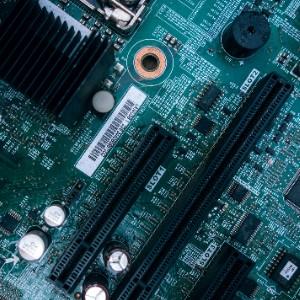Blog
Have you found yourself wondering what the circuit board assembly process is exactly? Printed circuit boards are vital to virtually every electronic product in existence today. They are widely recognized as the green computer chips covered in copper traces and a silkscreen with symbols and characters.
Printed circuit boards are typically manufactured from fiberglass, copper traces, and other conductive materials help together by an epoxy. The green colour of a circuit board is from the solder mask that helps insulate the entire board to help prevent conductive components from interfering with one another.
Circuit board assembly is an intricate and complex process done by our professionals at Permatech Electronics!
Here are the four major steps of the circuit board assembly process:
- Applying The Solder Paste: Similar to t-shirt screening, solder paste stenciling uses a thin, stainless steel stencil to apply a solder paste on parts where the components will be mounted in the printed circuit board. When applying the solder, a chemical named flux is used to help melt the paste and bond it to the board surface.
- Picking and Placing Components: After applying the solder paste, the next step in circuit board assembly process is the pick and place machine. This is where surface mount components are placed on the printed circuit board. This process was done manually before by circuit board assemblers who would pick and place components using a pair of tweezers. However, with the advent of robotics, this step is automated for more consistency and precision.
- Soldering: Once all the components have been mounted, the printed circuit board is placed to a conveyor belt that moves the board to a reflow oven. While inside the oven, the board is heated to melt the solder paste and permanently bond the components to the circuit board itself. In instance where the circuit board includes other components aside from SMDs, a through-hole component insertion may be necessary. However, in those cases a more specialized soldering method is required.
- Testing and Quality Control: In some cases, the movement of a printed circuit board during the reflow process can misplace components, leading to poor connection, lack of connection completely, or incorrect connection of parts. This is why it is important to conduct an inspection and run some tests in order to ensure functionality of the board. Even if all the steps above are meticulously done, there is still a chance a circuit board may fail the functional test. Failed printed circuit boards can either be scrapped or recycled and the process will begin again until the end result is a fully functioning printed circuit board.
At Permatech Electronics, we pride ourselves on delivering the best circuit board assembly in the industry. We aim to provide the best printed circuit boards in the business and will only give our customers circuit boards that we are proud of. Call or email us today to learn more about our products and services.






